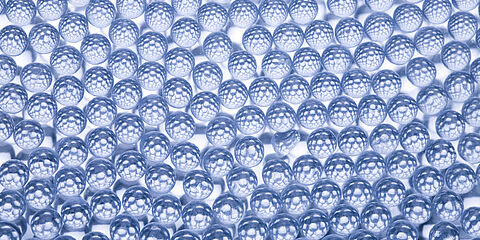Nanomaterials in cosmetics: review of nanomaterial analysis methods
The March 2021 update of the SCCS Scientific Opinion on the Safety of Nanomaterials reinforces the obligations of those responsible for placing cosmetic products on the market and of the suppliers of raw materials. To help you better understand the methods used for nanomaterial analysis, we review the subject here.

In a previous article, we informed you about the obligations of cosmetics manufacturers with regard to nanomaterials. In this article we introduce you to the current analysis methods.
What methods are used to detect and analyse nanomaterials?
Currently, there is no official method. Nevertheless, the JRC (Joint Research Centre) and the OECD publish recommendations on this issue.
Test methods and sample preparation have a strong influence on the results. It is therefore recommended to combine different analysis techniques to ensure better reliability.
- The DLS (dynamic light scattering) method or laser granulometry. These methods can give so-called ‘false negative’ results due to overestimation of the particle sizes. In fact, they do not distinguish aggregates and agglomerates from primary particles. Used on their own, these methods do not indicate the non-nano character of a substance.
- Scanning electron microscopy (SEM) allows the presence of nanoparticles to be observed by directly measuring the size of the primary particles. SEM, unlike indirect techniques, takes into account the concept of a number criterion.
- The SP-ICP-MS technique can also be used by supervisory authorities in certain cases. Not all nanomaterials are detected. This method does not distinguish between subpopulations of different-sized characteristics. It is therefore recommended to carry out an SEM analysis as well.
To confirm the ‘nano’ status of a substance, it is necessary to look not only at its primary particles (internal structure) but also at aggregates (strong bonds) and agglomerates (weak bonds) of nanoparticles, which are considered to fall within the definition of a nanomaterial (see the previous article in which we review the definitions of nanomaterials).
However, no technique is able to determine whether the bonds between particles are strong (covalent) or weak (electrostatic).
What analysis services does WESSLING offer?
WESSLING provides research and analysis of nanomaterials in cosmetics. Our offer is always fully adapted to the needs of the client and to the given context.
Research and analysis of nanomaterials in the laboratory is usually performed on pure substances.
Analysing finished products is more complex because the organic and inorganic parts must first be separated. To do this, you may need to communicate quite a lot of information to the laboratory (for example, the INCI list, how to separate the organic and inorganic phases, the substances to be investigated and what results are expected from this investigation of nanomaterials).
In our laboratories, we use two different preparation methods: liquid and solid followed by an SEM determination.
This gives us the size distribution of the substances, which allows us to decide whether they are nanomaterials according to the definition in Cosmetics Regulation 1223/2009.
Our analysis report will enable you to indicate on the labelling whether or not the substance is ‘nano’. Our full report includes SEM images and a description of the methods used.
Your contact
- Frédéric Jeampierre
- +33 7 56 37 24 99
- frederic.jeampierre@wessling.fr

„Please contact me with any questions you may have about nanomaterials in cosmetics and analysing them.“



